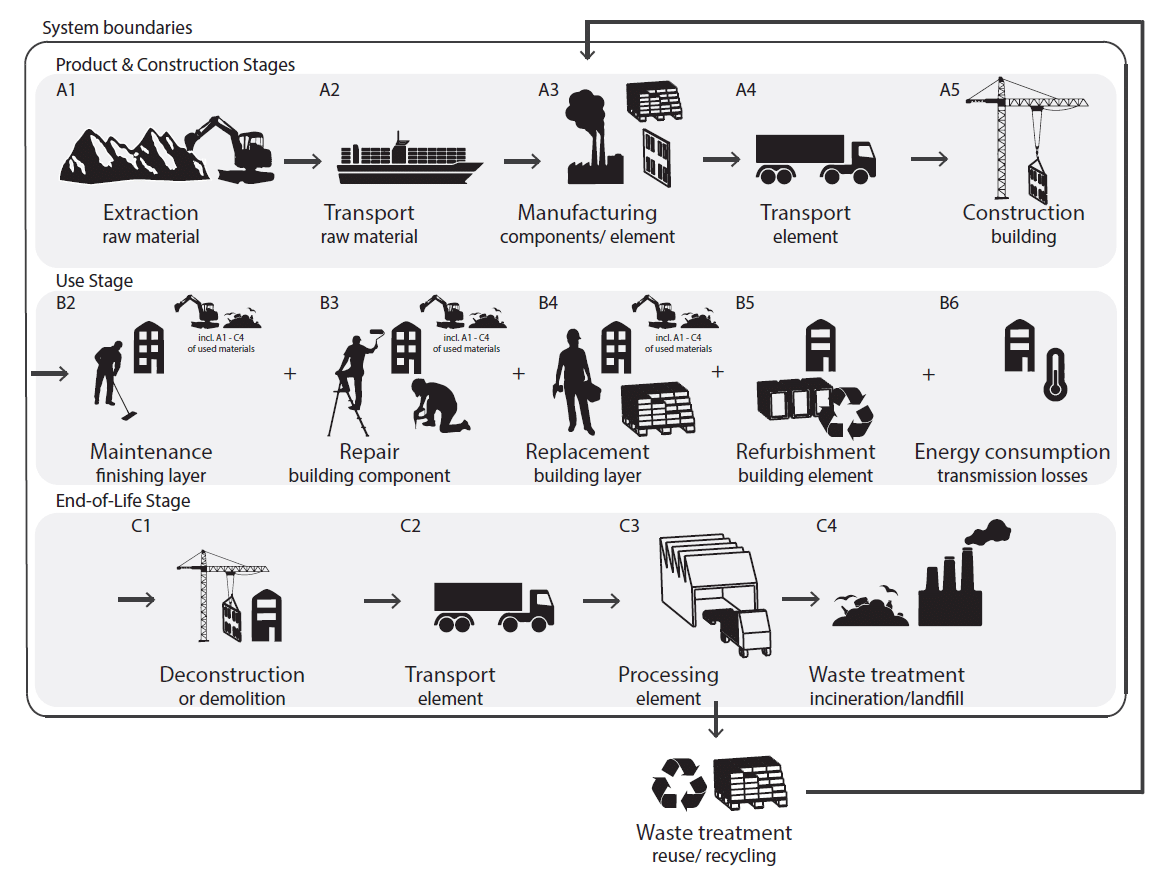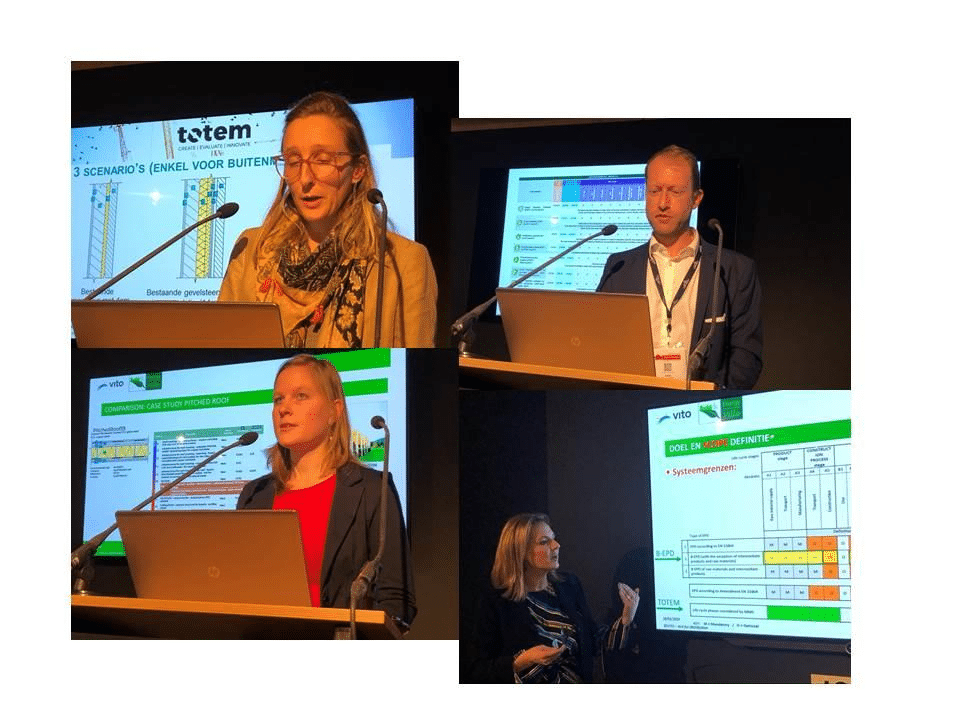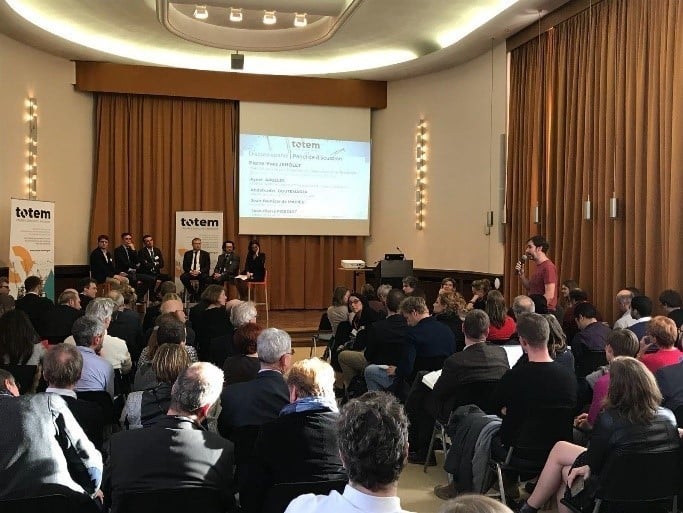Expert Talk: Environmental product declarations on the rise in the Belgian construction sector
The importance of the built environment, and in particular building materials, for achieving circular economy should not be underestimated. Based on a building typological survey of the Belgian residential property, building materials are responsible for about 10 to 30% of the environmental impact over the entire life cycle of a typical Belgian home built before 2001. This expert talk, written by Carolin Spirinckx, Lisa Damen and Karolien Peeters (all EnergyVille/ VITO), looks into the opportunities Environmental Product Declarations (EPD’s) can bring for the Belgian construction sector.
Written by Carolin Spirinckx, Karolien Peeters and Lisa Damen. Carolin Spirinckx is activity coordinator of the research group ‘Building and Energy Technology Life Cycle Evaluation’ within EnergyVille/VITO and responsible for the academic aspects of the research group on Building Materials and Concepts. Both Karolien Peeters and Lisa Damen are research experts on sustainability assessments within the built environment within this research group.
Context
The built environment is going through a transition towards a more sustainable future with major environmental, financial and social changes. In the past, a lot of attention has been paid to the energy performance of buildings [1]. Nowadays, as the energy use in buildings is decreasing significantly, much of the total environmental impact can be attributed to the materials used. Building materials cause environmental burdens during production, transport, construction and demolition. Also further processing and any new usage in a next life are key [2].

The importance of the built environment, and in particular building materials, for achieving circular economy should not be underestimated. Based on a building typological survey of the Belgian residential property, building materials are responsible for about 10 to 30 % of the environmental impact over the entire life cycle of a typical Belgian home built before 2001. This relative share is expected to increase in the coming decades as the share of energy-related environmental impacts during the economic life of the building will decrease significantly through the construction of, and renovation leading to, low-energy, passive, zero-energy and active buildings [3]. The way in which building materials are used will determine their sustainability over their entire life span. The factors relating to materials are largely underexposed.
The ‘Building and Energy Technology Life Cycle Evaluation’ research group within EnergyVille provides an integrative life cycle modelling approach for the assessment of sustainability performance of buildings and energy products/technologies and systems, supporting decision making and processes improvement related to design, production, transport, installation/construction, use, demolition and end-of-life. The research group assesses innovative building concepts taking into account adaptability and multi-use of buildings, and disassembly and reuse of building components. With its research the team develops methods, software applications and data platforms and provides science-based policy input. One of the team objectives is to help understand the importance and full scope of sustainability in the built environment.
Importance of regulations and standardisation
To assess and improve the sustainability performance of buildings over their entire life cycle, life cycle thinking is proposed in many relevant standards and in recent policy guidelines. The assessment studies are sensitive to the assumptions applied, that may be abused for greenwashing of products. Therefore, standardization of the assessment methodology is important. By defining clear rules, a common basis for environmental impact calculations is ensured and a fair comparison between products enabled. The standardization committee CEN/TC350 is responsible for developing such rules for Environmental Product Declarations (EPDs) of construction products, being standard documents that communicate the environmental impacts of products. Core rules are found in the European standard EN15804 [4]. In Belgium, a national supplement to EN15804 was developed for creating EPDs of Belgian construction products [5].
EN15978 contains a calculation method for the assessment of the environmental performance at the building level. In Belgium, a web-based calculation tool to assess the environmental performance of materials at building level has been developed by the three Belgian regions.
TOTEM: tool to assess the environmental performance of materials at the building level
In February 2018, the web-based calculation tool TOTEM (“Tool to Optimise the Total Environmental impact of Materials”) became available to the public [6].
The tool enables building level environmental impact assessment and was developed as part of a collaboration between the three regional Belgian authorities. The tool aims at building designers and other stakeholders and is transparent and objective. Its basis is a Life Cycle Assessment (LCA) methodology and export model “Environmental profile of building elements”, developed by VITO/EnergyVille, KU Leuven and BBRI. All environmental indicators are expressed in monetary values and summed up to a single score, making interpretation of the results much easier.
“The first milestone was achieved with the launch of TOTEM. Now, behind the scenes, we are preparing to integrate brand-specific data and expand the tool towards circularity.”
Roos Servaes, policy officer (OVAM), on behalf of the 3 regional authorities in charge of TOTEM
TOTEM is currently based on generic environmental data from the Swiss ecoinvent database (version 3.3), adapted to the Belgian context. Preparatory work has started to include Environmental Product Declarations (EPDs) in TOTEM. The EPDs must be registered in the national database for specific environmental data of construction materials used on the Belgian market (B-EPDs).
“The use of B-EPDs in TOTEM will increase the relevance of the tool for the Belgian market. In addition to brand related EPDs, collective EPDs – for a well-defined product group – have also a role to play. They provide representative information for architects who have not yet chosen a specific product at the design stage.”
Laurie Dufourni, Sustainability expert (Belgian Brick Association)

The use of TOTEM is currently not legally enforced. After the launch in February 2018, the tool has been optimised and tested. Its use is encouraged and monitored by the three Belgian regional authorities and might become the basis for a legislative framework in the future. Additional features of TOTEM investigated are linking the energy use simulation to the EPB calculation tool for energy performance and indoor climate, and the inclusion of circularity (reversibility of building elements). Research is ongoing on environmental benchmarks of buildings, which can be implemented in TOTEM in the future.
Customised program to develop environmental product declarations for the Belgian built environment
The Belgian Federal Public Service set up a ‘Belgian EPD Program’ or B-EPD [7]. The principal aim of the Belgian EPD program is to provide interested organizations with a framework for developing EPDs in accordance with the Belgian Royal Decree on environmental messages [8] and to make these available to the public. The B-EPD program is applicable to building products in the Belgian market or used in buildings on the Belgian territory.
“Wienerberger uses EPDs to get more insights into the environmental impacts during the production of bricks, facing bricks and roof roof tiles. EPDs are to be used for calculating the M (material)-level at the building level and can be used for B2B communication.”
Dr. Anita Ory, Public Affairs Manager – Sustainability (Wienerberger)
EnergyVille/VITO is convinced that the time is right to invest in the preparation of LCAs and EPDs for building materials on the Belgian market and wants to ensure that as many manufacturers as possible are represented in the Belgian EPD database. Therefore, EnergyVille/VITO establishes the B-EPD Support Program, offering affordable B-EPDs of construction products for manufacturers and sector organizations. This B-EPD Support Program is eligible for the “KMO-portefeuille” (SME support), and the first 10 SMEs who sign up for the program in 2020 receive an extra discount!!
Every year, several information sessions are organised to inform manufacturers on the different aspects and benefits of B-EPDs and the details of the program. Are you interested in joining one of these information sessions? Go to our events page to see the planned sessions called ‘How sustainable is your building material? Map the environmental impact!’ and register for free.
“This Support Program was the perfect opportunity for SVK to start performing life cycle assessments of our products quickly and efficiently. At first, the results will be used to further reduce the environmental impact of our products. Later on, by registering the EPDs in the Belgian EPD database, we hope that the data will be accepted and validated internationally.”
Carry Peeters, R&D Director (SVK)
Key takeaways:
- New buildings are becoming more energy efficient, hence increasing the relative share of materials in the total environmental impact of buildings. Insights into the material-related environmental performance of buildings are increasingly important.
- In February 2018, the web-based calculation tool TOTEM (“Tool to Optimise the Total Environmental impact of Materials”) became available to the public [6]. Preparatory work has started to include Environmental Product Declarations (EPDs) in TOTEM.
- The Belgian Federal Public Service set up a ‘Belgian EPD Program’ or B-EPD, providing interested organizations with a framework for developing EPDs in accordance with the Royal Decree on environmental messages.
- The B-EPD Support program of VITO/EnergyVille, supports building material producers in the development of B-EPDs that can be integrated in TOTEM:
- An EPD is now affordable and more attractive than ever.
- Building material producers striving for positive differentiation as a competitive advantage, should take advantage of the opportunities that B-EPDs offer
References
[1] https://ec.europa.eu/info/news/new-energy-performance-buildings-directi…
[2] Passer, A., Kreiner, H. & Maydl, P. (2012). Assessment of the environmental performance of buildings: A critical evaluation of the influence of technical building equipment on residential buildings. The International. Journal of Life Cycle Assessment, 17, pp. 1116-1130
[3] https://www.ovam.be/materiaalprestatie-gebouwen-0
[4] EN15804:2012+A2:2019
[5] NBN/DTD B 08-001:2017
[6] https://www.totem-building.be/
[7] https://emis.vito.be/sites/emis.vito.be/files/legislation/1125/2014/sb1…
[8] https://www.health.belgium.be/en/belgian-epd-programme-b-epd





